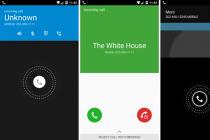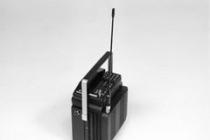The first means of communication in humans were light and sound signals. With the help of tom-toms or the smoke of fires, neighboring tribes let each other know about the approaching danger. Within the tribe, voice communication was enough. With the expansion of the human habitat and the development of intertribal ties, the communication system was also improved in parallel.
Benefits of mobile communication
In the zero years of this century, mobile communications began to penetrate the territory of Russia. The first mobile phones could not have global significance in human life due to their insufficient prevalence. Mainly members of the same family could communicate, having taken measures to create a mobile intra-family connection. The main advantage of mobile communications at that time was the ability to track each other's location and keep in touch.
With the introduction of mobile phones in the life of the overwhelming number of Russians, mobile communications have become the main means of communication not only between individuals, but also for individuals with organizations, regardless of the proximity of a landline phone and a settlement.
How people lived before mobile phones
The need for communication of a man of the 20th century was satisfied by a whole set of communication means. The oldest of them was, for which the whole industry was created. Today the epistolary genre has lost its informational meaning and is the prerogative of either romantics or residents of completely remote settlements. But they also face a problem - it is quite difficult to find a mailbox today without knowing its exact location.
In case of emergency communication, there was a round-the-clock telegraph, from which it was possible to send an urgent telegram and be sure that the information would be delivered to the address within an hour. The long-distance telephone also worked around the clock, in addition, there was a call system for people who did not have fixed telephones. With the advent of mobile communications, these technologies have been eliminated, and the possibility of using these services for people without a mobile phone has disappeared.
In the absence of mobile communication, there were payphones on the streets of cities, from which it was possible for a small fee to call any number within the village. Emergency phone numbers were on everyone's lips and calls to them were free. Another thing is that you had to run around the city in search of a working machine, but now they have disappeared from the streets, so emergency calls are available only from a mobile.
Modern mobile phones are significantly different from what they used 20 or even 10 years ago. Photo evidence is attached.
World's first mobile phone: Motorola DynaTAC 8000X (1983)
Motorola is not the leader in the mobile industry today, but it is the company that launched the world's first mobile phone. It turned out to be the DynaTAC 8000X. The prototype of the device was shown in 1973, but commercial sales did not begin until 1983. The powerful DynaTAC weighed almost a kilogram, worked for an hour on a single battery charge, and could store up to 30 phone numbers.

First car phone: Nokia Mobira Senator (1982)
In the early 1980s, the Nokia Mobira Senator phone became widely known. It was released in 1982 and became the first of its kind - it was intended for use in a car, while weighing about 10 kilograms.

Gorbachev spoke on it: Nokia Mobira Cityman 900 (1987)
In 1987 Nokia introduced the Mobira Cityman 900, the first device for NMT (Nordic Mobile Telephony) networks. The device became easily recognizable due to the fact that Mikhail Gorbachev used it to make a call from Helsinki to Moscow, and this was not ignored by photographers. The Nokia Mobira Cityman 900 weighed about 800 grams. The price was high - in terms of current money, its purchase would have cost the Americans $ 6,635, and the Russians - 202,482 rubles.

First GSM phone: Nokia 101 (1992)
The Nokia phone with the modest 101 index was the first commercially available device capable of operating on GSM networks. A monoblock with a monochrome screen had a retractable antenna and a book for 99 numbers. Unfortunately, the famous Nokia tune ringtone was not yet in it, as the song appeared in the next model, which was released in 1994.

Touchscreen: IBM Simon Personal Communicator (1993)
One of the first attempts to create a communicator was a joint development of IBM and Bellsouth. The IBM Simon Personal Communicator phone was stripped of the keyboard, offering a touchscreen with a stylus instead. For $ 899, customers received a device that could call, fax, and store notes.

First clamshell: Motorola StarTAC (1996)
In 1996, Motorola confirmed the title of innovator with the introduction of the first clamshell phone, the StarTAC. The device was considered stylish and fashionable, it was compact not only for that time, but also in comparison with modern smartphones.

First smartphone: Nokia 9000 Communicator (1996)
The weight of the Nokia 9000 Communicator (397 grams) did not prevent the phone from becoming popular. The first smartphone was equipped with 8 MB of memory and monochrome screens. When opened, a QWERTY keyboard opened up to the user's gaze, making it easier to work with text.

Interchangeable sockets: Nokia 5110 (1998)
In the late 1990s, companies realized that mobile phones were viewed by customers not only as a means of communication, but also as an accessory. In 1998, Nokia released the 5110, which supported interchangeable covers. The phone also became popular thanks to its excellent assembly and good battery life. It featured the famous Snake game.

First camera phone: Sharp J-SH04 (2000)
Sharp J-SH04 was released in Japan in 2000. This is the world's first camera phone. The camera resolution today seems ridiculous - 0.1 megapixel, but then the J-SH04 seemed like something incredible. After all, the phone could be used as a bad one, but still a camera.

Mail is the main thing: RIM BlackBerry 5810 (2002)
RIM introduced its first BlackBerry in 2002. Prior to this, the Canadian manufacturer was engaged in the production of organizers. The main drawback of the BlackBerry 5810 was the lack of a microphone and speakers - in order to talk on it, a headset was required.

PDA Meets Phone: Palm Treo 600 (2003)
Palm has long been considered the main PDA manufacturer and in 2003 released the extremely successful Treo 600 model. The communicator with QWERTY-keyboard, color screen, 5-way navigation key was based on Palm OS 5.

Gaming Phone: Nokia N-Gage (2003)
Nokia has made several attempts to capture the minds of mobile gamers, and not all of them have been successful. The first truly gaming phone is called the Nokia N-Gage. It is similar in design to a portable console and was positioned as an alternative to the Nintendo Game Boy. On the front side there are game control keys, which very few people found convenient. The games themselves were recorded on MMC memory cards. The microphone and speaker in the N-Gage is located at the end, so all users looked like Cheburashkas when talking. There were a lot of disadvantages and the project failed.

O2 XDA II (2004)
O2, like Palm, worked hard on the PDA. In 2004, the XDA II model appeared, offering users a slide-out QWERTY keyboard, office applications. The price then bite - $ 1,390.

As thin as a blade: Motorola RAZR V3 (2004)
The best selling clamshell is Motorola RAZR V3. The model attracted attention with a slim and stylish design. The creators drew inspiration from the "old man" StarTAC and, as a result, released a device dressed in a case with aluminum inserts, with a VGA-camera (0.3 Mp), Bluetooth, GSM. After the light, they saw the improved RAZR V3x, RAZR V3i and RAZR V3xx with a better camera, 3G, microSD.

First iTunes phone: Motorola ROKR E1 (2005)
In 2005, few people could have imagined that Apple, which specializes in computers and music players, would venture into the mobile industry (and introduce the popular iPhone). The company entered into an agreement with Motorola, and as a result, the ROKR E1 was created - a device with support for the iTunes music library. The buyers' expectations did not come true - few people liked the candy bar with Motorola-design, slow USB 1.1 interface, outdated 0.3-megapixel camera and limited song storage (100 pieces).

Motorola MOTOFONE F3 (2007)
The Motorola MOTOFONE F3 sold for just $ 60. One of the most affordable machines on the market offered an Electronic Paper Display (EPD) display. The advantages include low weight, small thickness.

Simple finger control: Apple iPhone (2007)
The first version of the Apple iPhone originally came out in the US in 2007. A touchphone with a 2-megapixel camera, a 3.5-inch touch screen, and a convenient finger-oriented interface supported only second-generation networks. iPhone didn't work with MMS and couldn't record video. In 2008, the iPhone 3G was released, and in 2009 - the iPhone 3GS. The concept has not changed in three years - programs and a user-friendly interface are in the center.
Surely many of you from time to time remember the past, the era of the origin of cellular communications and the era of its development. Moreover, we much less often remember the draconian tariffs for communication of the past years than the successful models of phones, which some of us still have dust somewhere on the shelves. Taking a good old pipe in hand, a feeling of nostalgia involuntarily arises. Oh, how nice it is to feel her in your hands again, what a feeling of confidence she conveys and how temptingly her screen lights up after inserting a SIM card. Let's go over the past and remember the most successful cell phones of the past, which have become classics and quality standards.
Motorola StarTAC 70
Year of issue: 1997


One of the first handsets of many veterans of mobile communications from the time when it was available only to a select few. Motorola StarTAC - the classic business-class model of the outgoing brand supported only the GSM 900 range, but even then it had relatively small dimensions - 57x98x23 mm and a weight of 125 g.
Year of issue: 1999



An elite phone at a crazy price in those years (about 11-12 thousand rubles). The model was made in an aluminum case and had a sliding flip that covers the keyboard. It was distinguished by the absence of an external antenna, very miniature dimensions - 44x100x17 mm and weight - 91 g, therefore it was especially popular among girls. The downside is the massive defect of the b / w screen, as a result of which almost every second phone eventually required repair. However, this did not prevent the great popularity of the model. An interesting fact: such a smart phone could only read SMS in Russian, but, despite the presence of input in Cyrillic, SMS in the native language reached the addressee empty.
Year of issue: 1999



Another premium phone from the long-gone Ericsson brand. Like the Nokia 8850, it had a flip covering the keypad, but in this case it did not slide down, but threw back when you pressed a button, which looked very stylish. Here, too, there were some drawbacks - over time, this button was erased and ceased to perform its function. The model had a very tiny 3-line monochrome display and was distinguished by its thinness - 15 mm.
Year of issue: 2000



The same thin brother of the T28s model, however, already belonged to the business class, had very impressive dimensions 51x130x15 mm and a large display with 5 lines of text. The phone turned out to be very successful and in demand, especially after it dropped significantly in price. It should be noted that this device was one of the first phones with full-fledged Russian input, including sending SMS.
Nokia 3310
Year of issue: 2000


Classics of the genre in the budget segment. The phone is a legend of yesteryear. Almost every third person went with him. Nokia 3310 was bought by workers, students and everyone who needed a simple "workhorse". The telephone was purchased for company employees and couriers as a simple and reliable device for work. The model was produced in various colors and had replaceable panels. It was distinguished by a rather decent weight - 133 g. Minus - Ni-MH-battery included.
Year of issue: 2001



Another expensive fashion phone from Nokia with a b / w screen and replaceable casing panels. It was distinguished by an original designed keyboard with stylish button illumination. The model also differed in miniature dimensions - 43x97x19 mm and weight - 84 g. An additional bonus was the built-in FM radio - a rarity in those days.
Siemens ME45
Year of issue: 2001






Luxurious dust and moisture resistant business class "SUV" with a black and white screen. The debut of Siemens and the most successful model of the brand that has left the market. The model gained immense popularity and was in active demand even after it was discontinued.
Nokia 6100
Year of issue: 2002



A miniature and very thin business class model with interchangeable panels and a color screen (4096 colors, 128x128 pixels). Dimensions - 44x102x14 mm, weight - 76 g. A very expensive phone at the beginning of sales (about $ 400). It was in demand for a very long time, including after it was removed from the assembly line.
Year of issue: 2002


Almost a complete analogue of the Nokia 6100 based on the successful Series 40 platform, however, due to the stylishly designed keyboard and original key backlighting, it already belonged to the premium segment. The price is the same as 6100.
Nokia 6310i
Year of issue: 2002





Modified model of Nokia 6310, the main strong point of which is the record time of operation from a powerful 1100 mAh battery. The Nokia 6310i phone with a b / w screen with a blue backlight (as opposed to the 6300, where the backlight is green) and support for Bluetooth was able to live from one charge to 2 weeks. It had impressive dimensions 47x130x19 mm, weight - 114 g and belonged to the business class. The model remained popular and in demand even years after it was discontinued, which was used by unscrupulous sellers offering a "refresher" version (with an updated body) of the phone for big money (about 10 thousand rubles).
Year of issue: 2003



An excellent fashionable and at the same time affordable model of the already former Sony Ericsson brand, which managed to turn from the once merged Sony and Ericsson into simply Sony. It featured a beautiful metal-like body and cool polyphony. The continuation of the phone in the form of the T630i model with an improved screen (TFT versus STN) and a camera with software increased to VGA resolution did not give the company such repeated success.
Year of issue: 2004


The phone is a razor-sharp image-grade 14 mm thick phone, which caused a storm of emotions and active demand among buyers, especially after a sharp drop in price. It is not without reason that the RAZR (Reisr) line later received its numerous continuation, including the V3i model with an improved screen resolution (240x320 instead of 176x220) and a more advanced camera (1.3 MP versus VGA).
Year of issue: 2005


An elite phone that became famous precisely because of its high cost (about $ 2000 at the start of sales). The model was bought by those who could afford it in order to stand out. The phone was originally produced in a black or silver steel case (later other variations appeared) and was distinguished by a stylish sliding mechanism, with the help of which its upper half, including the display, seemed to "shoot" upward when you move your finger. Later, like any successful model, Nokia 8800 got its continuation in the Sirocco line, and then in the latest series - Arte, which was distinguished by a larger battery, better display and camera, 3G support and various body finishes, including a real sapphire as a navigation key.
Year of issue: 2009


3G-smartphone with 600MHz processor based on Symbian OS 9.3 (Series 60) operating system. It featured a long battery life thanks to a powerful 1500 mAh battery. The stylish case with an aluminum back cover with a thickness of only 10 mm also played an important role.
Year of issue: 2011


Of the relatively modern devices, I would like to note the iPhone 4s smartphone from Apple, as the most successful model with an "optimal" 3.5-inch screen - the latest work of the company's inspirer - Steve Jobs.
Afterword
On this, perhaps, everything. The era of hit phones that have become classics, the standard of style and reliability is over. Or not? What phones, or rather, smartphones of our time, can claim such a title? Time will show.
Please leave your thoughts on this topic in the comments to the article or on our forum.
"My phone rang ..." I am sure that none of us today can imagine life without communications. We forget the phone at home and rush back to get it, we cannot find it in our bag or briefcase and we are sure to get upset. Who brought into our lives a unique technique that helps to connect people at a distance?
Lesson plan:
Is it possible to communicate without a phone?
Sure! People lived before, and they did not have any newfangled telephone models, but information from each other was transmitted far beyond their place of residence. The need for communication forced people to invent different ways to "call into conversation" and tell the news to comrades who are several kilometers away. How it was?

By that time, the first attempts were already made to create a telegraph capable of transmitting signals over long distances using electricity. The scientists Galvani and Volt were engaged in the fundamentals of electrical engineering, the Russian Schilling and Jacobi made their contributions, invented transmission codes and an apparatus that converts signals into text.
A little later, in 1837, thanks to the American inventor Morse, an electric telegraph and a special system of dots and dashes, widely known to everyone as "Morse code", appeared.

But even this was not enough for the scientists of those centuries. They dreamed that it would be possible not only to receive dry text over the wires, but also to speak over them!
It is interesting! Archaeologists discovered in the Peru region two pumpkins connected with a rope and concluded that this design is a thousand-year-old ancestor of the telephone. Indeed, it is very similar to two matchboxes connected by a thread, which we used to "call" in childhood.
Who invented first?
The history of the appearance of the phone is associated with Alexander Bell from America. But he was not the only one who was actively involved in the design idea of transmitting the human voice at a distance. Let's briefly go through the pages of history and trace the path that the invention overcame in the first stages of its birth.
Italian Antonio Meucci

In 1860, a native of Italy Antonio Meucci showed the Americans a device that could transmit sound over a wire, but he applied for a patent only in 1871, and to all his questions about the fate of the documents, the company that took them answered that they were lost.
German Philip Reis

The German physicist Philip Reis presented to the public an electrical apparatus capable of transmitting sound in 1861. By the way, his name "telephone" sounded from him, which we are used to hearing today, which is translated from Greek as "sound from afar."
Its transmitter was made in the form of a hollow box with holes: sound - in the front and covered with a membrane - on top. But the quality of sound transmission in Reis's phone was so low that it was impossible to make out anything, so his invention was not accepted by others.
Americans Gray and Bell

Only 15 years later, two American designers, Gray and Bell, completely independently of each other, were able to discover how a metal membrane using a magnet, like the eardrum of our ear, can transform sound and transmit it through an electrical signal.
Why did Bell get all the laurels of fame? It's that simple! On February 14, 1876, he filed his application to patent the invention he discovered - the "talking telegraph" - a couple of hours earlier than Gray did.
I can imagine how upset Gray was.
Bell unveiled the telephone at a tech show in Philadelphia.

The new technology did not have a call, the subscriber was called with the attached whistle, and the only receiver both received and transmitted speech at the same time. The first telephones had to generate electricity on their own, so the telephone line worked only up to 500 meters away.
It is interesting! In 2002, the American Congress passed a decision that turned the telephone world upside down: it recognized the Italian Meucci as the true inventor of the telephone.
Evolution of the phone

Since the first telephone set was presented to the public, inventors and designers have made a lot of effort to make a modern means of communication out of a primitive device.
So, engineers were able to replace the whistle for calling the subscriber with an electric call. In 1876, a switch was invented, which could connect not only two, but several telephones together.
A year later, the inventor Edison contributes to the development of the telephone - his induction coil increases the distance of sound transmission, and the carbon microphone, which improves the quality of communication, was used until the end of the 20th century. At the same time, in 1877, the first telephone exchange appeared in America, through which those who wanted to call someone were connected to the desired telephone operator's number through plugs.

Thanks to the contribution of the Russian inventor Golubitsky, the stations powered by a central source were able to serve tens of thousands of subscribers. It is noteworthy that the first telephone conversation in Russia took place three years after the appearance of the telephone, and in 1898 the first intercity line between Moscow and St. Petersburg was built.
It is interesting! The first telephones were not very convenient. It was hard to hear in them, so they came up with special tubes of different sizes and shapes, which just had to stick their nose in, so that the subscriber could understand what the conversation was about. At first they were made separate: one - to speak into it, the second - to listen from it. Then they began to be connected with a handle, like a modern telephone receiver. Telephones were made of ivory, mahogany, and cast metal. The bell cups were chrome-plated to a shine. But one thing remained unchanged: the body, the tube and the lever on which she was hung after the conversation.
Leaps and bounds towards modernity

The inventive world did not stop there. Having received a telephone at home, people wanted to use a modern means of communication even on the street, in transport, to communicate on the way to work or home.
Initially, such a communication that was not tied to the premises was available only to the special services - walkie-talkies under the nickname "walkie-talkie", or "walk-talk", became a tempting idea for ordinary users. Knowing the secrets of the device, the craftsmen tried to connect the devices to the line using such a radio communication. So in the 80s, radiotelephones appeared, working at a distance of up to 300 meters.
But the main advantage of recent years has undoubtedly become cellular communication, which operates from a signal moving from one station to another.

The modern "honeycomb" appeared in 1973 at the Motorola company. Their firstborn worked without recharging for no more than 20 minutes and was similar in size to a brick, and weighed as much as 794 grams!
These are now our modern "mobile phones" small and compact, able to take pictures, send mail and messages, play music and even think for their owner! They have become real helpers for children and their parents - you can always call and find out how you are doing!
It is interesting! A resident of Singapore, An Yan, is the fastest to write SMS - he needs a little more than 40 seconds for a message of 160 characters to appear!
Interesting facts about mobile phones
This video contains 23 more interesting facts about our telephones. They can complement your project, so watch carefully.
Now you know everything about the appearance of the telephone. Make a report and tell your friends, they will be interested! And I say goodbye to you, but do not forget to look into new projects and stay in touch!
Success in your studies!
Evgenia Klimkovich.














